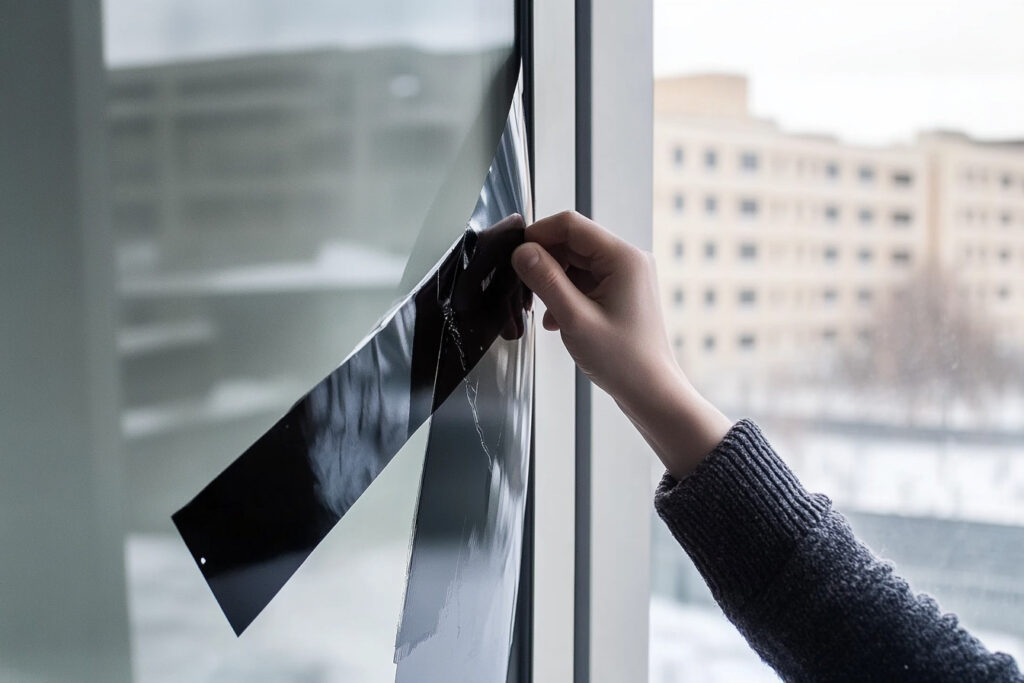Window tints can improve privacy, reduce heat, and protect interiors from UV rays. But when it gets old, bubbles, fades, or peels, it can detract from the look and effectiveness of windows in homes, businesses, and vehicles. Removing old window tint and adhesive residue may seem daunting, but with the right methods, you can achieve […]

Window tints can improve privacy, reduce heat, and protect interiors from UV rays. But when it gets old, bubbles, fades, or peels, it can detract from the look and effectiveness of windows in homes, businesses, and vehicles. Removing old window tint and adhesive residue may seem daunting, but with the right methods, you can achieve a clean, fresh look without damaging the glass.
This guide covers effective techniques to remove window tint and adhesive residue from residential, commercial, and car windows. Whether you’re dealing with home window film or car tint, these methods will help you get professional-quality results.
Over time, window tint can degrade, bubble, and fade due to constant sun exposure and heat. Old window film may also lose its adhesive strength, leading to peeling and an unsightly, uneven look. Additionally, outdated tints might lack the advanced UV-blocking or energy-saving properties of newer films, making replacement a practical choice for improved function and appearance.
Before starting the removal process, gather the following tools and supplies to ensure a smooth experience:
When using tools like razor blades, heat guns, or steamers, exercise caution to avoid scratching the glass or damaging surrounding areas. Always work in a well-ventilated area, especially if using ammonia-based solutions.
Steam is one of the most effective and low-risk methods for removing window tint from residential and commercial windows. The moisture from steam loosens the adhesive, allowing you to peel off the film in large sections without residue.
Step-by-Step Process:
This method is ideal for windows with stubborn, aged tint adhesive and requires using ammonia, so ensure proper ventilation.
Step-by-Step Process:
Car windows typically have a different adhesive type that is more challenging to remove. Additionally, rear windows often contain embedded defroster lines, requiring extra care to avoid damage.
The heat gun method works well for car windows because it loosens adhesive without needing strong chemicals. This method is also suitable for delicate rear windows with defroster lines.
Step-by-Step Process:
If you’re dealing with side windows, this method can make tint removal easier.
Step-by-Step Process:

Even after the tint is removed, adhesive residue may remain on the glass. Here are safe and effective ways to remove this residue without scratching:
If you’re dealing with extensive, aged window tint on a commercial building or vehicle, consider hiring a professional. Professionals use specialized tools and techniques to remove even the most stubborn tints efficiently and safely, reducing the risk of glass damage.
Is removing window tint with a razor blade safe? Yes, but only on glass windows, and using a fresh blade is essential to prevent scratches. Avoid using a blade on rear car windows with defroster lines.
Can I use Windex to remove the tint adhesive? Windex alone is generally not strong enough to remove the adhesive. Use ammonia, vinegar, or soapy water for better results.
How long does it take to remove window tint? The time varies based on the size of the window, type of adhesive, and removal method used. A single window can take between 20-40 minutes.
Can I remove the tint without leaving adhesive behind? With proper techniques, most adhesives can be removed with the tint, but some residue may require additional steps to clean completely.

As the admin of Sparkling & Beyond, I bring a wealth of knowledge and passion for excellence in the cleaning industry. With years of experience in providing top-notch cleaning solutions, I am dedicated to sharing valuable insights and tips to help maintain pristine and healthy living environments. My mission is to ensure every home and office we service sparkles with cleanliness and comfort.
![]()